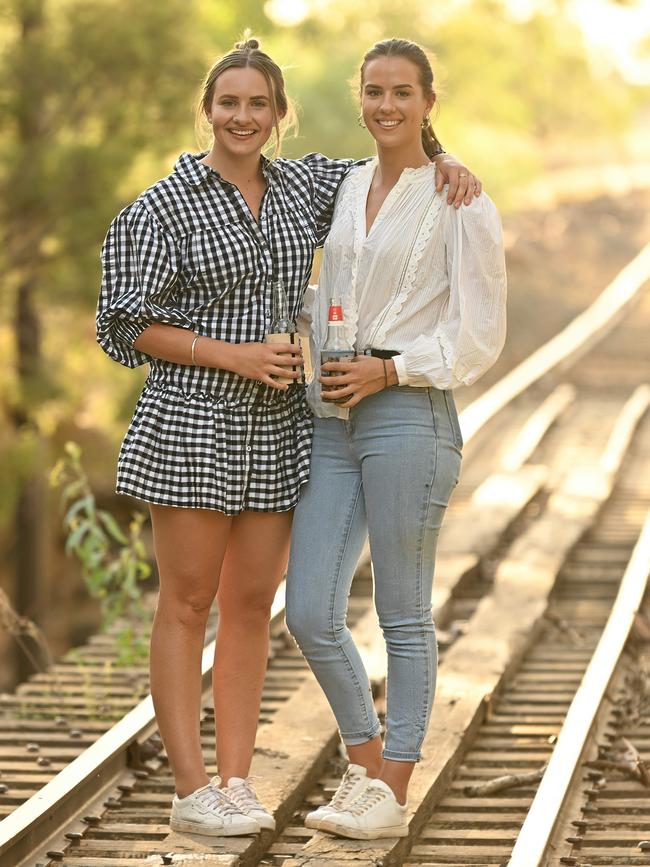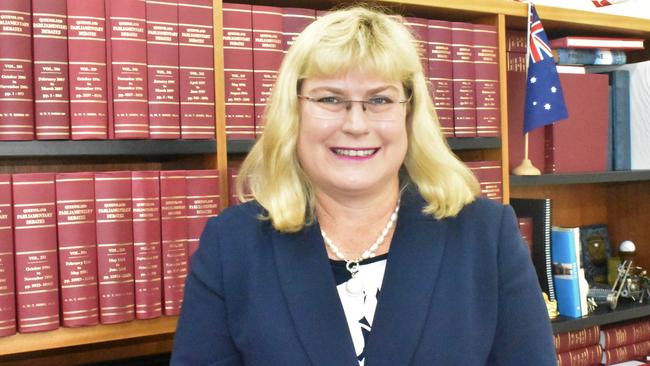‘Stranded’ city slicker sisters embracing outback town
The Fretwell sisters are among a cohort of young Australians who moved to the regions during the upheaval of the Covid pandemic.

It was meant to be a temporary stopover until they found a more permanent place to stay amid the tumult of border closures and lockdowns but 18 months after they first set foot in the tiny outback town of Quilpie, 1000km west of Brisbane, sisters Caragh and Liesl Fretwell say they aren’t going anywhere.
“We really thought it would just be a couple of weeks and then we’d be able to get to Western Australia,” Caragh said.
“About two weeks later, we were sitting down eating lunch and I said ‘Do you like it here?’.
“She said ‘Yep, do you like it here?’. ‘Yep, do you still want to go to WA?’ ‘No’.”
The Fretwells are among a cohort of young Australians who moved to the regions during the Covid pandemic.
Initially planning to move to Perth, they packed up their Brisbane home and were about to leave when the border to WA shut.

With their lease ended and no place to go, they asked their parents in rural NSW if they could stay at one of the family’s sheep properties 150km west of Quilpie, which had been purchased to feed their stock during the drought.
“We just thought we’d go out there, do some fencing and hang out,” Caragh said.
Caragh, 26, started working at the newsagency and Liesl, 23, to keep her registration current, took a job as a nurse at the local hospital.
The sheep property has since been sold and the sisters have moved into town where they plan to stay. A homegrown cabbage delivered by a neighbour, friendly greetings from strangers, busy race days, local balls and relaxed afternoons swimming beneath the disused railway lines on the edge of town contributed to the decision.
“We have it so good here,” Caragh said.
“We’ve got a great group of friends and the whole community looking after us. When our parents sold the property, everyone thought we’d leave but we’re not going anywhere.”
A report from the federal government’s Centre for Population released this month shows that in 2020-21, population growth in regional areas grew at a faster rate than capital cities for the first time since 1993-94.
“Historically, Australia’s capital cities have grown faster than rest-of-state (regional) areas,” the report said.
“This pattern changed during the pandemic as Australia’s international border restrictions reduced the growth of capital cities and there were larger than normal internal moves from cities to regions.”
The data showed young people deciding to stay in or move to regional areas was a significant driver in population growth outside the capital cities.
“Increased net internal migration to regions in 2019-20 was largely caused by a sharp drop in the number of people, especially young people, moving from regional areas to capital cities,” the report said.
“This likely reflected a combination of travel restrictions reducing relocation options, and increased opportunities to work and study in the regions, including work and study from home.
“A smaller but significant increase in the number of people moving from capital cities to regional areas also occurred in 2020–21, possibly reflecting changed lifestyle preferences and remote working opportunities.”
As a result of the change in trends, regional areas gained 31,000 people from capital cities in 2019-20 and 49,000 in 2020-21, up from 16,000 in 2018-9.
While the Centre for Population forecast net internal migration to regional areas would drop in 2023-24 as young people resumed pre-pandemic trends of moving to the city for work or education, that’s not the plan for the Fretwell sisters, who want to be permanent fixtures in the shire’s population of 769.
“We’re so happy here,” Liesl said. “The whole town works together to host events, and there’s always something on to bring the community together.
“There’s a lot of young people here with their own businesses and we all support each other,” she said.

Warrego MP Ann Leahy said the addition of fresh faces in ageing rural communities that had faced long-term population loss had been a positive side effect of the Covid-19 pandemic.
“Having young people like that coming into the community, these communities just embrace them because we want them,” Ms Leahy said.
“We’ll have a job for them, we’ll find them a home, we want every single one of those young, energetic people.
“They are fantastic for our communities.”




To join the conversation, please log in. Don't have an account? Register
Join the conversation, you are commenting as Logout